What's New
Displaying results 1101 - 1110 of 4899

Resource | Publications,
The publication presents cascade of HIV testing, care and treatment services, 2014–2015 for Bangladesh, Bhutan, India, Indonesia, Maldives, Myanmar, Nepal, Sri Lanka, Thailand and Timor Leste.

Resource | Publications,
Greatly expanded access to routine viral load testing will be a game-changer in the global response to AIDS. Routine viral load tests improve treatment quality and individual health outcomes for people living with HIV, contribute to prevention, and potentially reduce resource needs for costly second- and third-line HIV medicines.
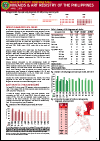
Resource | Fact Sheets,
In April 2019, there were 840 newly confirmed HIV-positive individuals reported to the HIV/AIDS & ART Registry of the Philippines (HARP). Twenty percent (165) had clinical manifestations of advanced HIV infection (WHO clinical stage 3 or 4) at the time of diagnosis.
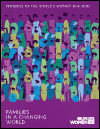
Resource | Publications,
UN Women’s flagship report, “Progress of the world’s women 2019–2020: Families in a changing world”, assesses the reality of families today in the context of sweeping economic, demographic, political, and social transformation. The report features global, regional, and national data. It also analyses key issues such as family laws, employment, unpaid care work, violence against women, and families and migration.
At a critical juncture for women’s rights, this landmark report proposes a comprehensive family-friendly policy agenda to advance gender equality in diverse families. A package of policies to deliver this agenda is affordable for most countries, according to a costing analysis included in the report.
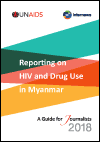
Resource | Publications,
The media has a critical role to play in correcting the myths surrounding drug use that has for decades, helped create an environment of misunder-standing, distrust and discrimination against people who use drugs. Drugs change the structure of the brain and how it works12 and yet drug use is seldom reported as a health problem.
Media coverage has mostly been focused on law enforcement, with drug users often portrayed as criminals. This negative portrayal adds to the stigma and discrimination against drug users, discouraging them from accessing essential health services, including HIV prevention and treatment services.
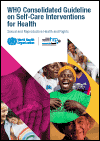
Resource | Guidelines,
Worldwide, an estimated shortage of 18 million health workers is anticipated by 2030, a record 130 million people are currently in need of humanitarian assistance, and disease outbreaks are a constant global threat. At least 400 million people worldwide lack access to the most essential health services, and every year 100 million people are plunged into poverty because they have to pay for health care out of their own pockets. There is an urgent need to find innovative strategies that go beyond the conventional health sector response.

Resource | Publications,
Mandatory HIV testing and bans on entry, stay and residence based on HIV status not only do not protect public health but undermine HIV prevention and treatment efforts. For millions of people living with HIV around the world, these are repeated violations of their right to privacy, equality and non-discrimination and a constant reminder of HIV-related stigma. In 2016, United Nations Member States agreed to eliminate HIV-related travel restrictions. In 2019, around 48 countries and territories still maintain some form of HIV-related travel restriction.

Resource | Publications,
Nepali women and girls are vulnerable to violence at the hands of their husbands and in-laws. The key drivers of women’s vulnerability to violence against women and girls (VAWG) in the migrant communities of Nepal include gender inequitable norms, the lower position of young married women in the family, poor spousal and in-law relations, and poverty. In this context, working with the family has great potential to reduce violence and improve the conditions of women and girls.
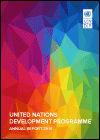
Resource | Publications,
2018 was the first full year for UNDP of implementing a new Strategic Plan—a plan built to help countries deliver on the Sustainable Development Goals.
At a time of change for the United Nations, UNDP worked with partners to help people get on their feet and stay there—meeting short-term needs while laying the foundations for a hopeful, confident future.

Resource | Reviews and Snapshots,
This 2019 snapshot is the fourth annual edition of this publication, showing the prevalence and trends of violence against women in the Asia-Pacific region.
The data in the map and Table 2 reflect the most recent (national, if available) data collected with either the WHO methodology, the DHS-DV module, or the UNECE VAW module, from publicly available survey reports, updated in May 2019.





